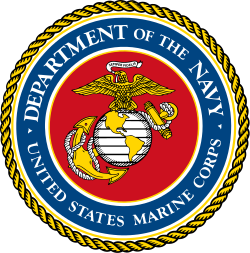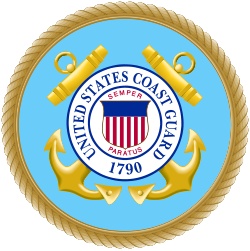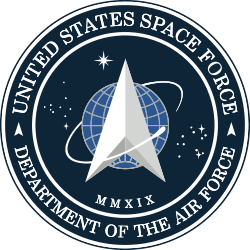The Army Goes Rolling Along
The Army Goes Rolling Along (dt. „Das Heer rollt voran“) ist der Titel der offiziellen Hymne der United States Army und ist inoffiziell als The Army Song bekannt.[1]
Geschichte
Die Ursprünge der Hymne reichen bis in den April 1908 zurück, als der Oberleutnant und spätere Brigadegeneral Edmund L. Gruber gemeinsam mit den Leutnants William Bryden und Robert M. Danford sowie drei anderen Offizieren[2] ein Vorläuferlied namens The Caisson Song („Protzenlied“) für seine Einheit, erarbeitete, das unter Artilleristen schnell an Beliebtheit gewann.[3] Im Jahre 1917 baten der Marineminister Josephus Daniels und Heeresleutnant George Friedlander, der im 306. Artilleriebataillon diente, John Philip Sousa darum, einen Marsch zu komponieren, der auf dem Caisson Song gründen sollte. Sousa war bereits zu diesem Zeitpunkt ein bekannter Militärkomponist und hatte 1888 den offiziellen Marsch des US Marine Corps komponiert. Nach ihm ist das Sousaphon benannt. Da das Lied informell verbreitet worden war, führte man seinen Ursprung auf den Sezessionskrieg zurück und wähnte seinen Schöpfer tot.[4] Sousa änderte die Tonart, Harmonik und den Rhythmus, und fügte eigene Textbausteine hinzu, und veröffentlichte das Lied als US Field Artillery neu.[5] Die Aufnahme verkaufte sich in kürzester Zeit über 750.000 Mal.[2] Auf diesen Erfolg hin trat Gruber mit Sousa in Kontakt, der sich sofort dazu bereit erklärte, Tantiemen an Gruber abzuführen.[2] Seine Urheberschaft konnte er durch seine ehemaligen Kameraden glaubhaft belegen. Gruber war über den Erfolg seiner Komposition erfreut, sodass er die Weiterverbreitung in Liedersammlungen wie beispielsweise der West-Point-Sammlung genehmigte.[6] Von den Tantiemen für die Erstveröffentlichung des US Field Artillery stand der Bekanntheitsgrad des Liedes innerhalb der Truppe für Gruber im Vordergrund, sodass er nicht gegen diverse kommerzielle Drittveröffentlichungen vorging.[7]
Das Heer fühlte sich aufgrund der Tatsache, dass es im Gegensatz zu den anderen Teilstreitkräften nach dem Zweiten Weltkrieg noch über keine eigene, offizielle Hymne verfügte, zunehmend unter Druck gesetzt, sodass Heeresstaatssekretär Frank Pace im Jahre 1952 einen öffentlichen Wettbewerb ausschrieb und zur Evaluierung der Vorschläge eine zivile Kommission einsetzte. Der Liedermacher Sam H. Stept, Urheber des Liedes Don’t Sit Under the Apple Tree, gewann zwar die Ausschreibung, musste aber einer Entschärfung zweier Zeilen zustimmen.[8] Der Vorschlag trug den Namen The Army goes Rolling Along. Stept war hierzu von einem Besuch in Fort Benning im Bundesstaat Georgia inspiriert worden. Am 20. Januar 1953 wurde der Marsch zur Amtseinführung von Präsident Dwight D. Eisenhower gespielt. Aufgrund urheberrechtlicher Bedenken wegen der Ähnlichkeit zu einem Lied namens I’ve Got A Lovely Bunch Of Coconuts setzte das Heer den offiziellen Marsch ab und beauftragte einen ihrer gedienten Musiker, den bereits pensionierten Major Harold Arberg, damit, einen angemessenen Ersatz zu finden. Dabei machte ihm der Nachfolger Paces', Wilbur Brucker, die Vorgabe, den U.S. Field Artillery umzuschreiben, damit er für alle Truppenteile repräsentativ sei. Arbergs Version wurde 1956 unter dem Titel The Army Goes Rolling Along zum offiziellen Marsch der Army.[9]
Im heutigen Gebrauch wird von jedem Soldaten die Kenntnis des Liedes vorausgesetzt und erwartet, dass jedes Mitglied der United States Army bei Erklingen den Marsch im Stand mitsingt.[10]
Text
| Englischer Text | Sinngemäße Übersetzung |
|---|---|
| March along, sing our song | Marschiere mit, sing’ unser Lied |
| with the Army of the free | Mit der Armee der Freien |
| Count the brave, | Zähl’ die Mutigen |
| count the true, | Zähl’ die Wahrhaftigen |
| who have fought to victory. | Die bis zum Sieg kämpften |
| We’re the Army and proud of our name; | Wir sind die Army und unseres Namens stolz |
| We’re the Army and proudly proclaim: | Wir sind die Army und verkünden stolz: |
| First to fight for the right, and to build the Nation’s might, | Die ersten im Kampf für das Recht, und um die Macht unserer Nation zu bauen, |
| And the Army Goes Rolling Along | Da rollt die Army voran |
| Proud of all we have done, | Stolz auf all das, was wir verrichteten, |
| Fighting till the battle’s won, | Kämpften wir bis die die Schlacht gewonnen war |
| And the Army Goes Rolling Along | Und die Army marschiert voran |
| Refrain: | |
| Then it’s hi, hi, hey! The Army’s on its way | Dann heißt es Hi, hi, hey, die Army ist auf dem Weg, |
| Count off the cadence loud and strong (two, three) | Zählt den cadence ein, laut und stark (zwei, drei) |
| For wher-e’er we go, You will always know | Denn wo auch immer wir hingehen, solltest Du wissen |
| that the Army Goes Rolling Along | Dass die Army stets marschiert |
| Valley Forge, Custer’s ranks, San Juan hill and Patton’s tanks, | Valley Forge, Custers Stellungen, der Hügel von San Juan und Pattons Panzer |
| And the Army went rolling along. | Auch da rollte die Army voran. |
| Minutemen from the start, | Minutemen von Anbeginn, |
| Always fighting from the heart, | Immer von Herzen kämpfend, |
| And the Army keeps rolling along. | Da rollte die Army voran. |
| Refrain: | |
| Men in rags, men who froze, still that Army met its foes, | Männer in Lumpen, Männer, die (er)froren, die Army trat noch immer ihren Feinden entgegen |
| And the Army went rolling along. | Auch da rollte die Army voran |
| Faith in God, then we’re right, | Glaube an Gott, dann sind wir auf dem rechten Weg |
| And we’ll fight with all our might, | Dann können wir mit all unserer Macht kämpfen |
| As the Army keeps rolling along. | Sodass die Army voranrollen kann |
Weblinks
- "The Army Goes Rolling Along" auf der Website der US Army Brass Band (englisch)
- Kurzvorstellung auf der offiziellen Website der US Army, inklusive dreier Audioaufnahmen (englisch)
Einzelnachweise
- ↑ „The official song of the United States Army is “The Army Goes Rolling Along” (see FM 1–19, app A, fig A–9, and A–10), known informally as the Army Song.“ Army Regulation 220–90 (PDF; 104 kB) Abschnitt 2–5 (f) Headquarters, Department of the Army, Washington, D.C., 14. Dezember 2007, S. 16.
- ↑ a b c Beschreibung bei bragg.army.mil
- ↑ The First-Ever Gruber Award for the Outstanding FA Professional, in: Field Artillery, November/Dezember 2002, nach: General Order No. 17, Headquarters Fort Leavenworth, Kansas, 2. Juni 1941.
- ↑ „During Sousa’s brief wartime service in the navy, he was invited to a luncheon meeting in New York with Secretary of the Navy Josephus Daniels and Army Lieutenant George Friedlander. Friedlander, of the 306th Field Artillery, asked Sousa to compose a march for that regiment, suggesting that the march be built around an artillery song then known by such names as ‚The Caisson Song‘, ‚The Caissons Go Rolling Along‘, and ‚The Field Artillery Song‘. The song was believed to be quite old, perhaps of Civil War origin, and had not been published; the composer was believed dead.“ (Memento vom 11. Februar 2007 im Internet Archive), zitiert nach: Paul Bierley: The Works of John Philip Sousa. Integrity Press 1984, S. 93 f.
- ↑ „The complete composition was then published as the 'U.S. Field Artillery' march.“, zitiert nach Bierley.
- ↑ „[…]but he did permit its incorporation into a volume of West Point songs in 1921“, zitiert nach Bierley
- ↑ „It glorified the U.S. Army Field Artillery, so it mattered little to him that many users of his melody made money while he received nothing.“, zitiert nach Bierley
- ↑ A Song of Its Own. In: Time, 19. Januar 1953.
- ↑ Song Origins – The Official Army Song. Westchester Cordsmen, Band 4, Ausgabe 11, Dezember 2004, S. 4, zitiert nach: Robert Dorr: Duty, Honor, Country - A Five Minute History Lesson. It took 3 tries to come up with an official Army song.
- ↑ The “Army Goes Rolling Along” is played at the conclusion of every U.S. Army ceremony and all soldiers are expected to stand and sing. US Army Symbols and Insignia. army.mil; abgerufen am 6. April 2008.
Auf dieser Seite verwendete Medien
U.S. Department of The Army Emblem.
- In the center is a Roman cuirass below a vertical unsheathed sword, point up, the pommel resting on the neck opening of the cuirass and a Phrygian cap supported on the sword point, all between on the right an esponton and on the left a musket with fixed bayonet crossed in saltire behind the cuirass and passing under the sword guard.
- To the right of the cuirass and esponton is a flag of unidentified designs with cords and tassels, on a flagstaff with spearhead, above a cannon barrel, the muzzle end slanting upward behind the cuirass, in front of the drum, with two drumsticks and the fly end of the flag draped over the drumhead; below, but partly in front of the cannon barrel, is a pile of three cannon balls.
- To the left of the cuirass and musket is a national color of the Revolutionary War period, with cords and tassels, on a flagstaff with spearhead, similarly arranged above a mortar on a carriage, the mortar facing inward and in front of the lower portion of the color and obscuring the lower part of it; below the mortar are two bomb shells placed side by side.
- Centered above the Phrygian cap is a rattlesnake holding in its mouth a scroll inscribed "This We'll Defend."
- Centered below the cuirass are the Roman numerals "MDCCLXXVIII."
- For differences between this text description and the emblem shown above, see "Army Seal vs. Army Emblem", below.
Seal of United States Department of the Air Force - military department for the United States Air Force and the United States Space Force
Seal of the United States Marine Corps. It is defined in Executive Order 10538 (alternate source) as:
For more information, see here.Standing upon the western hemisphere of the terrestrial globe containing the lines of latitude and topographical outlines of North, Central, and South America, an American bald eagle with wings displayed horizontally and inverted holding in his beak a scroll inscribed with the motto SEMPER FIDELIS, all bronze. Behind the western hemisphere a foul anchor bend sinister-wise with stock, arms, and flukes in slight perspective, all bronze, on a scarlet background and within a dark blue band edged in gold circumscribed by a gold rope rim and inscribed DEPARTMENT OF THE NAVY • UNITED STATES MARINE CORPS in gold letters. The central device of the seal is the emblem of the United States Marine Corps.
United States Coast Guard Seal, in correct PMS colors. This emblem shall only be used in accordance with the Coast Guard Heraldry Manual, and is not to be reproduced commercially without prior approval of the U.S. Coast Guard.
The Army Song ("The Army Goes Rolling Along") performed by "Pershing's Own" United States Army Band
Seal of the United States Space Force.
*Description: On a circular background of fair sky and moderate sea with land in sinister base, a tri-mast square rigged ship under way before a fair breeze with after top-sail furled, commission pennant atop the foremast, National Ensign atop the main, and the commodore's flag atop the mizzen. In front of the ship a luce-type anchor inclined slightly bendwise with the crown resting on the land and, in front of the shank and in back of the dexter fluke, an American bald eagle rising to sinister regarding to dexter, one foot on the ground, the other resting on the anchor near the shank; all in proper colors. The whole within a blue annulet bearing the inscription "Department of the Navy" at the top and "United States of America" at the bottom, separated on each side by a mullet and within a rim in the form of a rope; inscription, rope, mullet, and edges of annulet all gold. *Background: The policy for use of the Navy seal and emblem is contained in SECNAV Instr 5030.4 and SECNAV Instr 5030.6. The seal design was approved by the President of the United States by Executive Order 10736 dated October 23, 1957. Request for use of the Navy emblem should be submitted in writing to Defense Printing Service, ATTN: DPSMO, 8725 John Kingman Rd Suite 3239, Fort Belvoir, VA 22060-6220. The telephone number is (703) 767-4218. 1879 version here: http://etc.usf.edu/clipart/54900/54985/54985_seal_navy.htm





